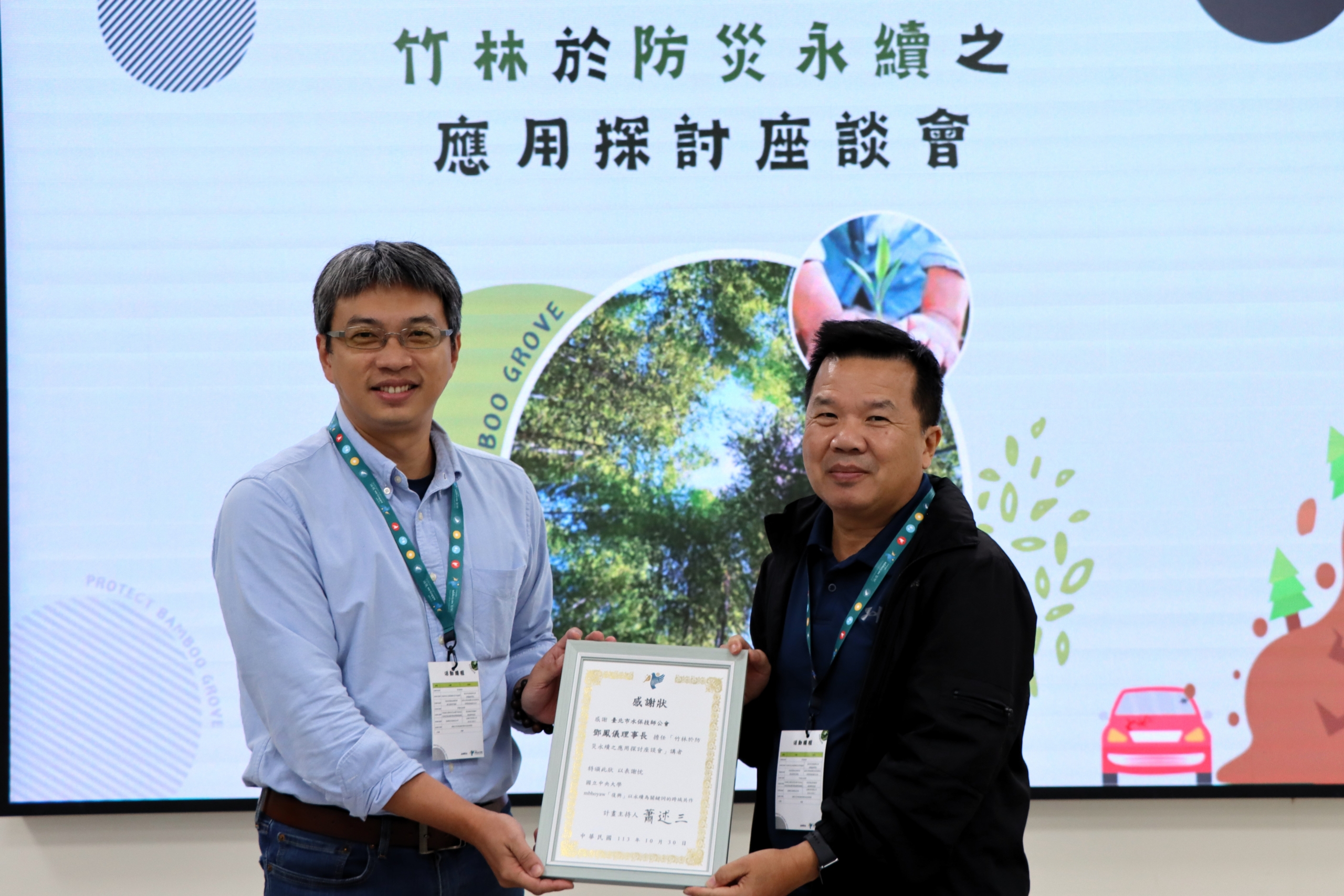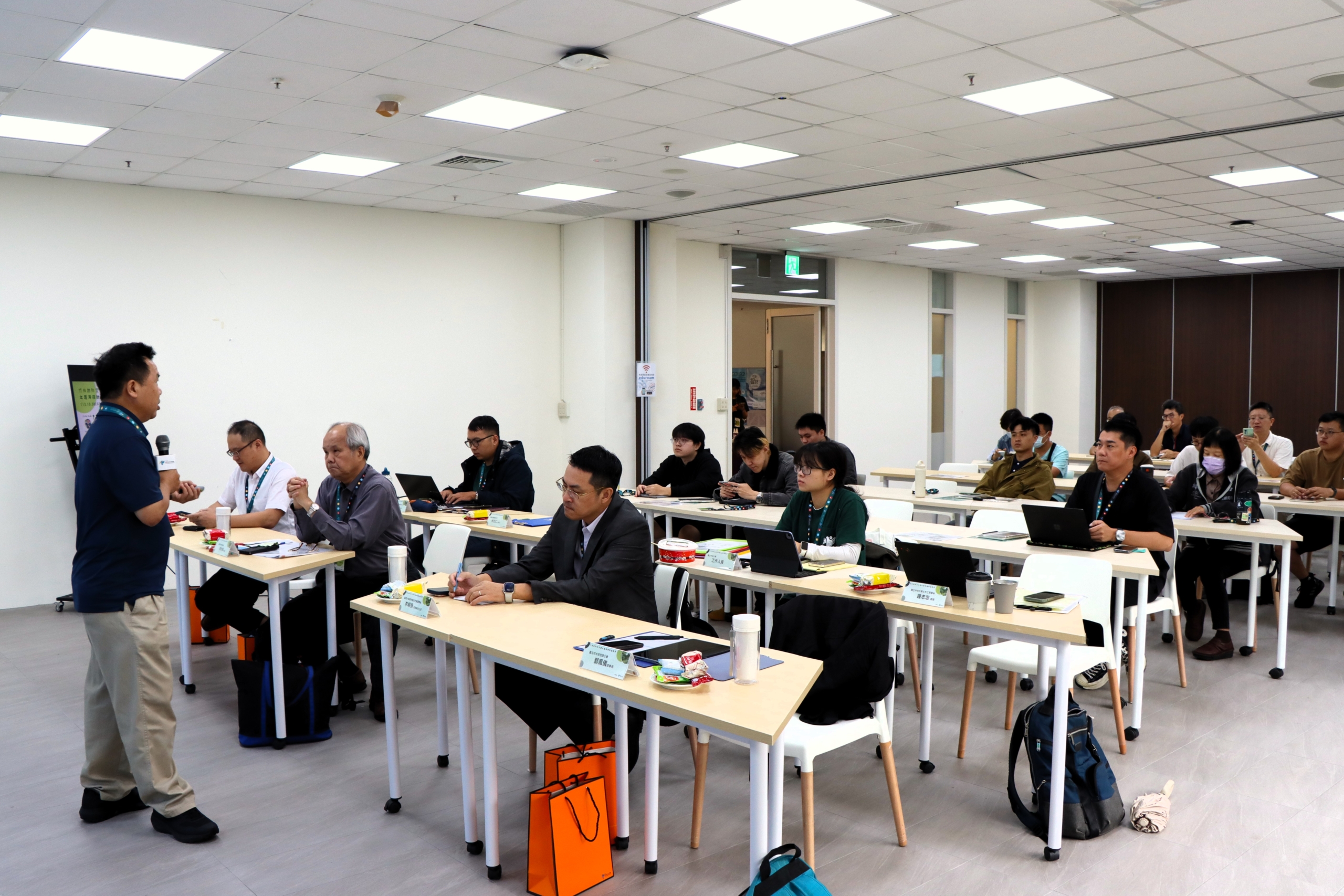Evolution of Soil Conservation and Regulatory Frameworks
The first session of the symposium featured Deng Feng-Yi, Chairperson of the Taipei Soil and Water Conservation Professional Engineers Association. Deng shared insights on the relationship between bamboo forests and soil conservation, drawing from his extensive experience in road planning, including contributions to projects such as the Wuyang Overpass, the Taiwan High Speed Rail, and sections of the Suhua Highway Improvement Project. Deng humorously remarked, “Destruction keeps me employed,” highlighting how soil conservation often becomes a priority only during construction projects.
Deng then provided an overview of the evolution of soil conservation-related regulations. Before 1994, the primary legislation was the Slopeland Conservation and Utilization Act, which focused on conservation. The passage of the Soil and Water Conservation Act in 1994 shifted the focus to balancing development and environmental protection while promoting the rational use of land. Deng also clarified the definition of “slopeland”: areas at elevations exceeding 100 meters with slopes greater than 5%, which are designated as “statutory slopelands” by the Executive Yuan and governed under the Soil and Water Conservation Act.
Characteristics and Applications of Bamboo
During his talk, Deng highlighted the October 28 approval of a carbon sequestration methodology for bamboo forest management, drawing attention to the unique characteristics and applications of bamboo. He noted that bamboo matures within just four years, offering a carbon sequestration efficiency significantly higher than that of trees. However, due to its shallow root system, bamboo is often grouped with betel nut, contributing to a widespread perception that it is unsuitable for soil conservation. Deng refuted this notion, emphasizing that landslides are not necessarily linked to the presence of bamboo or betel nut. He elaborated on bamboo’s two key features: its classification as a grass (belonging to the Poaceae family) and its robust underground rhizome system. Bamboo can be categorized into sympodial (clumping) and monopodial (running) varieties, with running bamboo showcasing an extensive rhizome network. An entire bamboo forest might originate from a single mother bamboo through this system. Deng likened bamboo’s rhizomes to the stolons of Bermuda grass, which spread across the surface, whereas bamboo rhizomes grow underground. Both systems play a critical role in stabilizing and protecting the soil.
The Soil and Water Conservation Benefits of Bamboo
Deng also shared insights into bamboo’s role in soil conservation. He noted that after heavy rainfall, most plant debris found drifting in river channels consists of camphor and cypress wood, with bamboo appearing far less frequently. This indicates that bamboo is not as detrimental to soil conservation as commonly perceived. However, Deng reminded the audience that under extreme climate conditions, all vegetation is vulnerable to damage. While bamboo forests can help mitigate erosion, specific conditions, such as exposed soil, can still lead to landslides or slope failures.
Concluding his presentation, Deng revisited the principles of sustainable development and the importance of submitting soil and water conservation plans, emphasizing the core spirit of the Soil and Water Conservation Act. This lecture not only deepened the audience’s understanding of the critical role of soil conservation but also dispelled the myth that bamboo forests are inherently detrimental to maintaining soil stability.
Speaker Deng, Feng-Yi (Chairperson of the Taipei Soil and Water Conservation Professional Engineers Association)
Text by Deng, Jia-Yang
Editor by Li, Ruo-Jia
Photos by Li, Ruo-Jia




